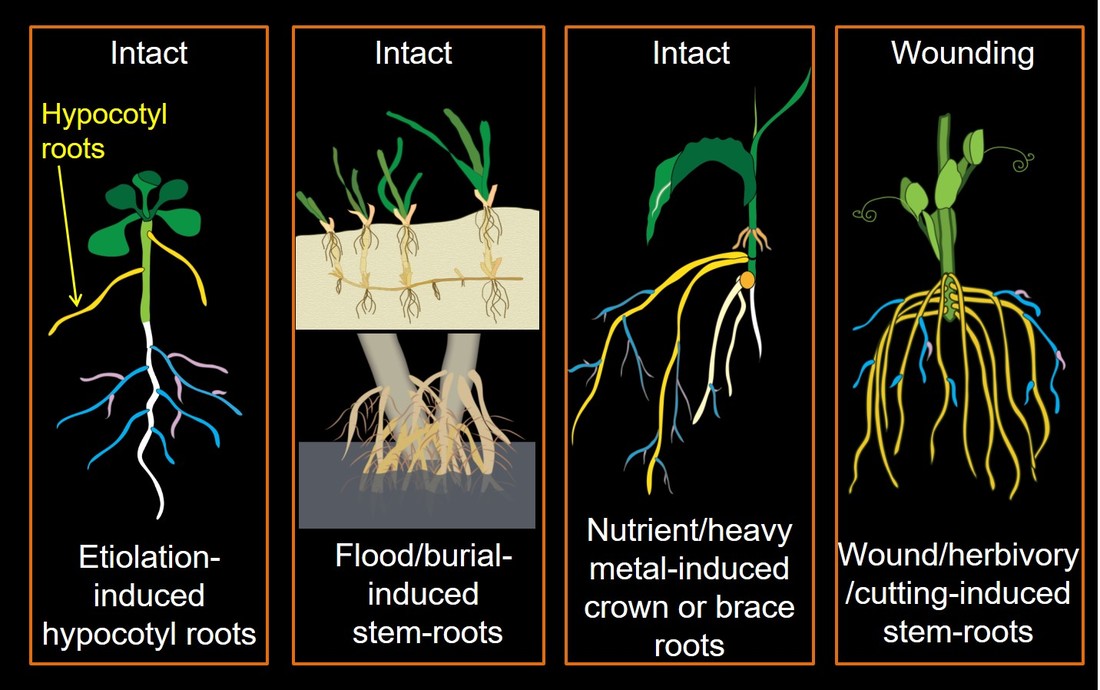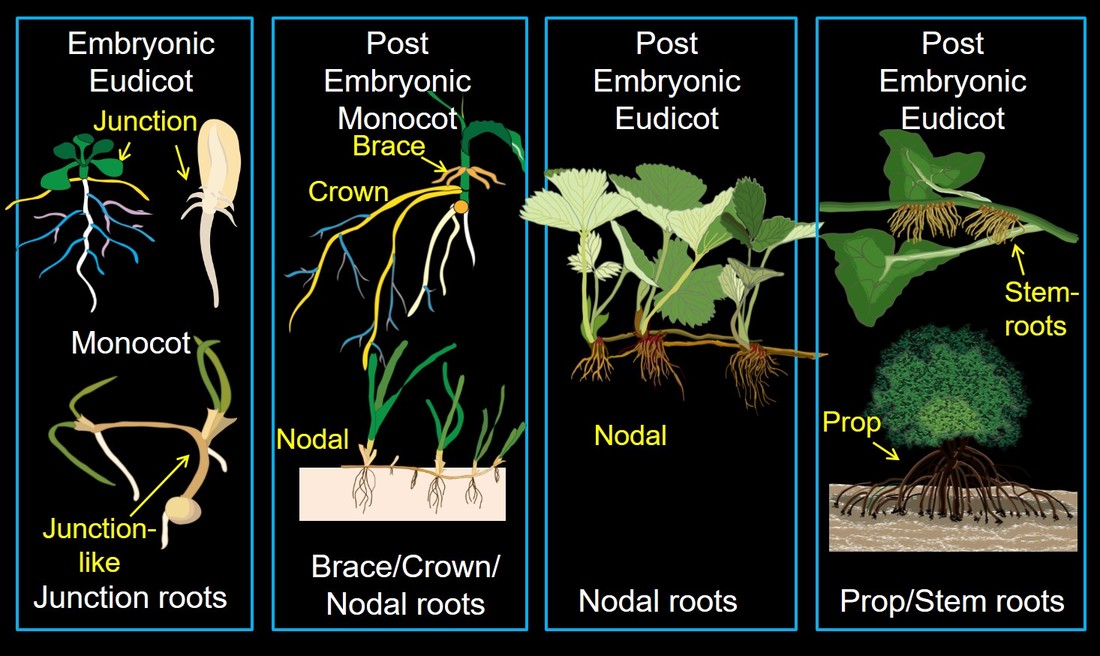AR_LAB
ADVENTITIOUS ROOT PHYSIOLOGY
Amanda Rasmussen welcomes you to the AR_Lab webpage!
In these pages you will find out about who we are, what we are doing and where you can find us.
In these pages you will find out about who we are, what we are doing and where you can find us.
What are adventitious roots?Adventitious roots are roots that form from any non-root tissue. Adventitious roots form in many different plants under normal conditions and in response to different stresses and so are important in an Ecological context. They are also central to propagation of many commercially important plants in forestry and horticulture and so are Economically important. Many of our cereal crops depend on root systems made up of crown and brace roots - all types of adventitious roots. So adventitious roots are also important for our own Existence.
The AR_Lab studies how adventitious root types develop and respond to different environmental conditions in each of these 3-Es and aims to harness advantages for more efficient and resilient crop production and improved cutting propagation. Because stem roots are one part of a complete connected organism we also measure whole plant physiology such as photosynthetic efficiency, respiration rates, pigment levels and whole plant growth patterns. Examples of adventitious root types
There are many different types of adventitious roots including roots that form as part of normal development. These can be grouped according to whether they form within the embryo or post-embryonically; whether the species is a monocot or eudicot; and by the part of the plant from which the adventitious roots form (for example from the hypocotyl-root junction, stem nodes or internodes). Examples of these are shown in the figure below.
Adventitious roots also form in response to stressful conditions (see figure) including low light/etiolation, burial or flooding, nutrient deficiency, heavy metals or wounding (such as in cuttings). The figures on this page have been adapted from Steffens B, Rasmussen A (2015) The physiology of advantageous adventitious roots. Plant Physiology http://dx.doi.org/10.1104/pp.15.01360. Advantageous adventitious rootsSince these roots are a normal part of development and often confer tolerance to different stresses, understanding how they function and respond in different conditions could help us develop new resilient crop varieties. In addition, many industries rely on cutting propagation including fruit trees and vineyards, ornamental plant production and forestry plantation propagation and our research will lead to improvements in propagation for these important industries.
|
Latest publicationsAmanda Rasmussen, Maria Laura Vidoz, Erin Sparks; (2024) Stem-borne Roots as a Framework to Study Trans-organogenesis and Uncover Fundamental Insights in Developmental Biology Current Opinion in Plant Biology 81: 102604. doi.org/10.1016/j.pbi.2024.102604
A Ola, IC Dodd, A Albacete, Y Xiong, A Rasmussen, N De Diego and CE Lovelock (2024). Mangrove species found in contrasting environments show differing phytohormonal responses to variation in soil bulk density. Plant and Soil. https://doi.org/10.1007/s11104-024-06490-4 DT Hickman, D Comont, A Rasmussen, MA Birkett (2023) Novel and holistic approaches are required to realize allelopathic potential for weed management Ecology and Evolution 13(4)e10018 (IF 3.167; 2 citations) https://doi.org/10.1002/ece3.10018 Sheeran L, Rasmussen A (2023) Aerial roots elevate indoor plant health: physiological and morphological responses of three high‐humidity adapted Araceae species to indoor humidity levels. Plant Cell and Environment 46: 1873-1884 (IF 7.947; 1 citation) https://doi.org/10.1111/pce.14568 |
